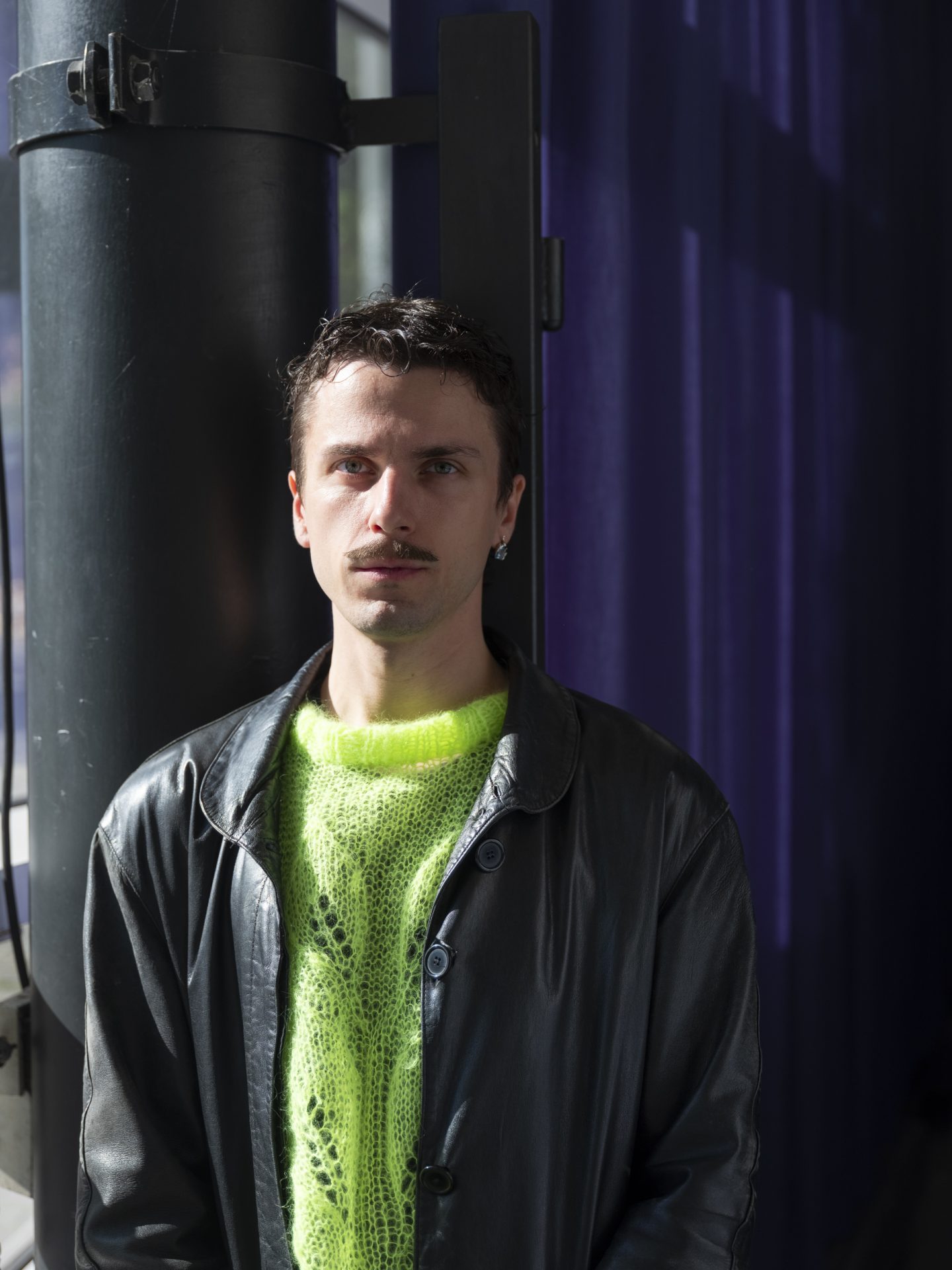Collective togetherness has always been at the heart of urban dance – a cultural practice that has its roots in the Bronx in the 1970s. Back then, urban dance developed with the Black community and soon spread far beyond the city limits of New York, just like hip hop and graffiti. These days urban dance, with its countless stylistic manifestations – from breakdance to so-called waving – is an integral part of big-city life all over the world. Its history is recorded as one of the appropriations of “Black excellence” under white supremacy and therefore merits critical consideration.
This is also reflected by Düsseldorf-based artist and dancer Daria Nazarenko in her project “i sneezed on the beat and the beat got sicker”. In a three-day program, the exhibition combines workshops, dance sessions, and an expert discussion in the middle of a multi-part video installation at Neuer Kunstraum Düsseldorf. Among other things, it aims to address questions of cultural appropriation in a self-critical way. The idea emerged after a year of research as part of the Pumps&Hammers project together with Lina Thöne Mustafa Fuzer and Erika Knauer.
The paradigm of communality
Numerous other persons were also involved in realizing the project. It thus corresponds to the paradigm of communality within urban dance practice itself. Hence, the Düsseldorf dance crew HoS is represented, which the artist joined at the start of the corona pandemic. “Over the past two years, I got to know a lot of people involved in the scene, which I find to be extremely innovative. I want to share this with the art scene.” Daria Nazarenko means this to include far more than just the local artistic goings-on. “It’s not only about urban dance, but also about strategies of subcultures that form again and again and create stages quite flexibly at different locations – be they institutional or otherwise.”

It’s not only about urban dance, but also about strategies of subcultures that form again and again
Nazarenko enrolled at the Düsseldorf Academy in 2019 to study art and will graduate next year from the “House of DGF”, the performance class run by Dominique Gonzalez-Foerster. In contemporary art discourses that also shape the study of liberal arts, notions of collectivity and solidarity are readily invoked. The concept of the singularly creative individual has long been outdated, and collective work processes are universally proclaimed. Yet these approaches often remain an idea that seems downright utopian in the hardened structures of the art business. Against this background, with the project “I sneezed on the beat and the beat got sicker” the artist is also addressing the art world that aims to deconstruct power structures and dismantle hierarchies. What can it learn from urban dance?

According to Nazarenko, the learning process in urban dance is based on the motto of “each one teach one”: In shared dance sessions, all those involved can teach each other something and thus themselves learn something new to the same extent. This principle takes place in the form of movement-based dialogues. The dancers form a circle and open out its center to create a stage that serves the exchange of dance gestures, so-called “cyphers”. “Call and response” is the process that sets in motion a chain reaction and is based on the idea of communication on an even footing. Why not transfer this method and create a platform on which the two scenes can benefit from each other as equals?

More than a dance performance
Through the implementation of the theme in Neuer Kunstraum Düsseldorf, urban dance leaves the streets for one weekend and simultaneously raises the visibility of this subculture. Can an exhibition room offer the freedom that dancers take from the asphalt? In any case, those involved are used to conquering places for themselves. The public space is considered a meeting point for everyone, allowing them to express themselves freely. There is much more to this self-empowering process than a dance performance. Rather, a network emerges that is self-sustaining and thrives on mutual support. By “representing” in both the urban and the digital space, and now also in the art institution, the urban dancers become role models and points of contact for interested parties.

So anyone who, instead of visiting a more classic exhibition, wants to experience what goes on in the streets of North Rhine-Westphalia and beyond, and yet is the subject of scant attention, will not be disappointed here. Participation itself is merely optional. The important thing is to feel at ease in your own body, as the initiator emphasizes.
